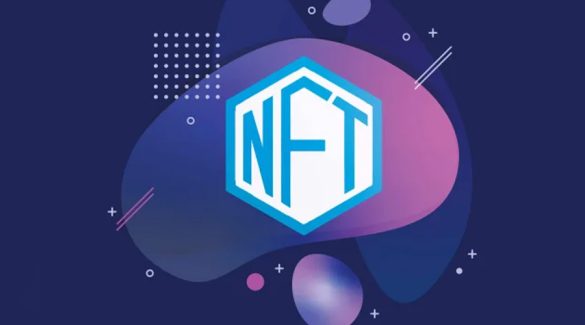As technology continues to evolve, it’s changing how we work, communicate, and learn. The rise of blockchain technology has led to the development of non-fungible tokens (NFTs), which are becoming increasingly popular in various industries. One sector that could benefit greatly from NFTs is the education industry, especially when it comes to certification programs.
In this article, we’ll explore the potential of NFTs in education and certification programs. We’ll discuss what NFTs are, how they work, and their potential applications in the education industry. We’ll also look at the benefits of using NFTs for certification programs and the challenges that may arise.
What are NFTs?
Before we delve into how NFTs can be used in education, it’s important to understand what they are. NFTs are unique digital assets that are stored on a blockchain. Unlike other digital assets like cryptocurrencies, NFTs cannot be exchanged for something else. They are unique and have their own intrinsic value.
NFTs are created using smart contracts, which are self-executing contracts with the terms of the agreement between buyer and seller being directly written into lines of code. Smart contracts enable NFTs to be stored on a decentralized network, making them secure and transparent.
How do NFTs work?
NFTs are created using blockchain technology, which is a decentralized, distributed ledger that records transactions across a network of computers. Each block in the chain contains a number of transactions and every time a new transaction is added to the chain, it becomes part of the permanent record.
NFTs are stored on a blockchain, and each NFT has a unique identifier that makes it distinguishable from other NFTs. This unique identifier is what gives NFTs their value and makes them different from other digital assets.
Potential Applications of NFTs in Education
NFTs have the potential to revolutionize the way we approach education and certification programs. Here are some potential applications of NFTs in the education industry:
Certificates and Degrees
NFTs can be used to create digital certificates and degrees that are stored on a blockchain. This would make it easier to verify the authenticity of certificates and degrees, and reduce the risk of fraud. It would also make it easier for employers to verify the qualifications of job applicants.
Digital Badges
NFTs can also be used to create digital badges that represent specific skills or achievements. These badges could be earned by students who complete specific courses or programs, and could be used to demonstrate their skills to potential employers.
Copyright and Intellectual Property
NFTs can be used to protect the intellectual property of educators and institutions. They could be used to create unique digital assets that represent educational content, such as course materials and textbooks. This would enable educators and institutions to monetize their content and ensure that it’s not being used without permission.
Benefits of NFTs in Education
Here are some of the benefits of using NFTs in education and certification programs:
Transparency and Security
NFTs are stored on a blockchain, which makes them transparent and secure. This means that certificates, degrees, and other educational credentials can be easily verified and are less likely to be fraudulent.
Accessibility
NFTs make it easier to access educational credentials, as they can be stored digitally and accessed from anywhere. This could be particularly beneficial for people in remote or underprivileged areas who may not have access to traditional education.
Monetization
NFTs could provide a new source of revenue for educators and institutions. They could create and sell digital assets that represent their educational content, which could be a valuable source of income.
Challenges of NFTs in Education
While NFTs have the potential to revolutionize the education industry, there are also some challenges that need to be addressed. Here are some of the challenges that may arise when using NFTs in education:
- Cost: Creating and managing NFTs can be expensive, especially for smaller educational institutions or individual educators. The cost of creating NFTs may also be passed on to students, which could make education more expensive for some.
- Technical Expertise: Using NFTs requires a certain level of technical expertise, which may be a barrier for some educators and institutions. They may need to hire or train staff to manage NFTs, which could be a significant cost.
- Adoption: NFTs are still a relatively new technology, and it may take some time for the education industry to fully adopt them. There may be resistance to change from some educators and institutions, and it may take time to develop the infrastructure needed to support NFTs in education.
Case Studies of NFTs in Education

Including case studies of how NFTs have been used in education could be a powerful addition to the article. For example, the University of Bahrain has recently announced that it will be using NFTs to issue digital certificates and degrees, making it the first institution in the region to do so. Including details about this initiative and others like it could help to illustrate the potential of NFTs in education.
Potential Challenges of NFTs in Education
In addition to the challenges mentioned earlier, there are some other potential issues that could arise when using NFTs in education. For example, there may be concerns around privacy and data protection, as storing educational credentials on a blockchain could make them more vulnerable to hacking or other forms of cyber attack. It may also be difficult to ensure that NFTs are accessible to all students, particularly those with disabilities or who speak languages other than English.
Legal Considerations of NFTs in Education
There may be legal considerations that need to be taken into account when using NFTs in education. For example, there may be regulations around the creation and issuance of digital certificates and degrees that need to be followed. There may also be copyright issues to consider when creating and selling digital assets related to educational content.
Potential Impact on Traditional Credentials
Finally, it’s worth considering the potential impact that NFTs could have on traditional educational credentials such as diplomas and degrees. While NFTs offer many benefits, there may still be some value in having physical copies of credentials that can be easily displayed or presented in certain situations. Additionally, it may take time for employers and other organizations to fully recognize and understand the value of NFTs as a form of educational credential.
Ethical Considerations of NFTs in Education
There are also ethical considerations that need to be taken into account when using NFTs in education. For example, some critics argue that the use of NFTs could further entrench existing power imbalances within the education system. This could be especially problematic if certain educational institutions or educators have greater resources or technical expertise to create and manage NFTs, which could result in unequal access to educational credentials.
Potential for Interoperability of NFTs in Education
There is also potential for NFTs to be used across different educational institutions and systems. For example, if a student earns a digital badge from one institution, it may be possible for them to use that badge as credit towards a program at another institution. However, this would require some level of interoperability between different NFT systems and standards, which is still a work in progress.
Security Considerations of NFTs in Education
It’s important to consider the security implications of using NFTs in education. While blockchain technology is generally considered to be secure, there is always a risk of cyber attacks or other security breaches. Institutions will need to take steps to ensure that their NFT systems are properly secured and that sensitive information is protected.
Opportunities for Lifelong Learning
NFTs could also create new opportunities for lifelong learning and upskilling. By earning digital badges and other forms of recognition for completing specific courses or programs, individuals could demonstrate their skills and knowledge to potential employers or other organizations.
Social and Environmental Impact of NFTs on Education
It’s also worth considering the potential social and environmental impact of NFTs in education. While blockchain technology is often touted as being more sustainable than traditional systems, there are still concerns around the energy usage and carbon footprint of NFTs. Additionally, it’s important to consider how NFTs could impact social inequalities, such as access to education and opportunities for marginalized communities.
The Role of Educators
While NFTs have the potential to revolutionize the way we think about educational credentials, it’s important to remember that educators will still play a crucial role in the education system. They will still be responsible for designing and delivering courses, evaluating student performance, and providing guidance and support to students. As such, it’s important to consider how NFTs can be integrated into existing educational practices in a way that supports and enhances the work of educators.
Future Applications of NFTs in Education
Looking to the future, there are many other potential applications of NFTs in education that could be discussed in the article. For example, NFTs could be used to create secure digital voting systems for student elections or to create digital versions of traditional academic awards such as diplomas and medals. Additionally, NFTs could be used to create digital collectibles related to specific educational experiences, such as attending a particular course or participating in a study abroad program.
Conclusion
NFTs have the potential to revolutionize the way we approach education and certification programs. By using blockchain technology, NFTs can provide transparency, security, and accessibility to educational credentials. They could also provide a new source of revenue for educators and institutions. However, there are also challenges that need to be addressed, such as cost, technical expertise, and adoption.
FAQs
- What are NFTs?
NFTs are unique digital assets that are stored on a blockchain. They are distinguishable from other NFTs and have their own intrinsic value.
- How are NFTs created?
NFTs are created using smart contracts, which are self-executing contracts with the terms of the agreement between buyer and seller being directly written into lines of code.
- How can NFTs be used in education?
NFTs can be used to create digital certificates and degrees, digital badges, and protect intellectual property.
- What are the benefits of using non-fungible tokens in education?
The benefits of using NFTs in education include transparency and security, accessibility, and monetization.
- What are the challenges of using non-fungible tokens in education?
The challenges of using non-fungible tokens in education include cost, technical expertise, and adoption.
